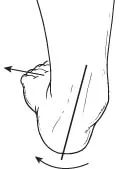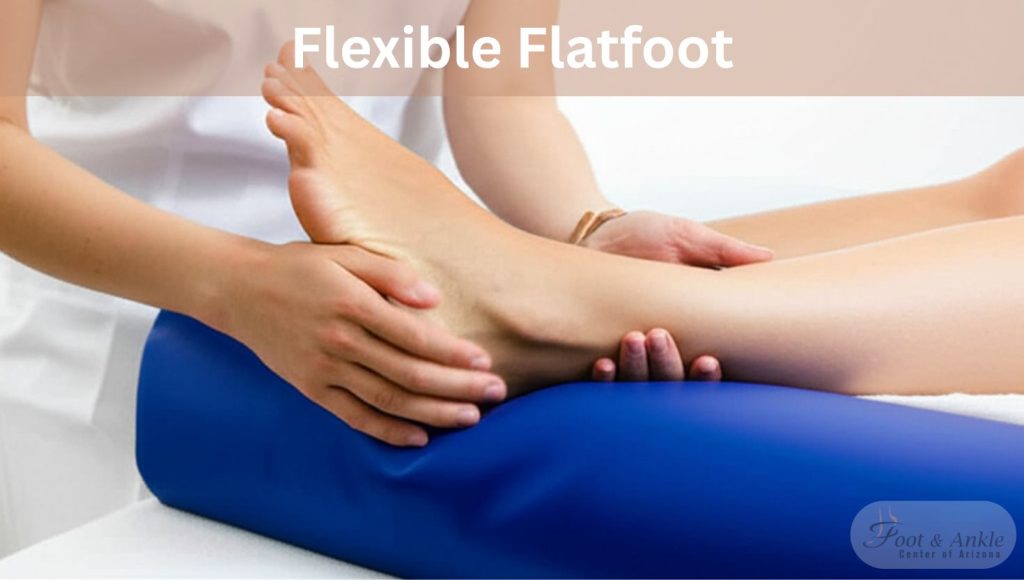What Is Flatfoot?
 Flatfoot is characterized by the partial or complete collapse of the arch in the foot. It is a multifaceted condition, manifesting with diverse symptoms and varying degrees of deformity and impairment. Several subtypes of flatfoot exist, all sharing the common feature of a loss of arch height. Additional shared characteristics include toe drift, where the toes and the front part of the foot point outward, the tilting of the heel towards the outside, and an apparent inward rotation of the ankle. Flatfoot can lead to a tight Achilles tendon, causing the heel to lift off the ground prematurely during walking, potentially exacerbating the problem, and sometimes contributing to the development of bunions and hammertoes.
Flatfoot is characterized by the partial or complete collapse of the arch in the foot. It is a multifaceted condition, manifesting with diverse symptoms and varying degrees of deformity and impairment. Several subtypes of flatfoot exist, all sharing the common feature of a loss of arch height. Additional shared characteristics include toe drift, where the toes and the front part of the foot point outward, the tilting of the heel towards the outside, and an apparent inward rotation of the ankle. Flatfoot can lead to a tight Achilles tendon, causing the heel to lift off the ground prematurely during walking, potentially exacerbating the problem, and sometimes contributing to the development of bunions and hammertoes.
Flexible Flatfoot
Flexible flatfoot is among the most prevalent forms of flatfoot. It typically initiates during childhood or adolescence and persists into adulthood. Usually, it affects both feet and progressively worsens over the years. As the deformity advances, the soft tissues, including tendons and ligaments, within the arch may stretch or tear and become inflamed. The term “flexible” indicates that the arch reappears when the foot is not bearing weight.
Symptoms
Some individuals with flexible flatfoot may experience the following symptoms:
- Pain in the heel, arch, ankle, or along the outside of the foot.
- An inward rolling of the ankle (overpronation).
- Pain along the shin bone (shin splint).
- General discomfort or fatigue in the foot or leg.
- A possibility of experiencing low back, hip, or knee pain.
- Diagnosis
To diagnose flatfoot, a foot and ankle specialist examines the foot and assesses its appearance while standing and sitting. Typically, healthcare providers take X-rays to assess the condition’s extent.
If diagnosed with flexible flatfoot but not experiencing any symptoms, the surgeon will provide insights into what to expect in the future.
Non-Surgical Treatment
For individuals with symptoms related to flexible flatfoot, non-surgical treatment options may be recommended by the surgeon. These can include:
- Activity modifications: Reducing sports that motivate pain and minimizing prolonged taking walks and standing to relieve stress on the arches.
- Weight loss: If overweight, losing weight can alleviate symptoms, as excessive weight can worsen the condition.
- Orthotic devices: Doctors may prescribe customized shoe inserts to provide increased arch support.
- Immobilization: In some instances, a walking cast or avoidance of weight-bearing may be necessary.
- Medications: Nonsteroidal anti-inflammatory capsules (NSAIDs), which include ibuprofen, can assist in alleviating aches and inflammation.
- Physical therapy: Ultrasound therapy and other physical therapy methods may provide temporary relief.
- Shoe modifications: Wearing supportive footwear is essential for individuals with flatfoot.
- Ankle Foot Orthoses (AFO) devices: Health professionals may suggest advanced bracing options to improve walking and support the arches.
When Is Surgery Necessary?
For a few patients, while other treatments fail to alleviate their pain, surgical operations might be taken into consideration. Various surgical techniques are available to address flexible flatfoot, and an unmarried method or a mixture of methods can be required to relieve signs and symptoms and beautify foot characteristics. The choice of surgery depends on factors including the volume of deformity as seen in X-ray findings, age, pastime degree, and character occasions. Recovery instances vary based totally on the chosen manner or strategies.




